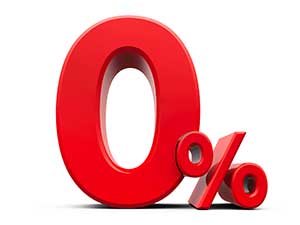Types of Zero Down Home Loans

Without a doubt, buying a home is an expensive endeavor, and it’s important to save money wherever you can. But should you consider going with a type of zero down home loan?
Certainly, going with a zero down home loan is something you can consider – but it’s best to know what you’re getting into before you take that leap. On the surface, it can seem like a great idea to get a zero down home loan. But there are lots of things that can affect you as a home buyer and home owner down the road if you’re not carefully prepared.
One of the benefits of a zero down home loan is obvious, not having to pay a down payment – and depending on the cost of your potential new property, this can save you a lot of money up front. This can also help you to afford a home that you might not have been able to afford, if the loan product required a down payment. Instead of spending money on a down payment, you can use it to pay closing costs or save it for future emergencies.
But the flip side to this is you’ll begin your experience as a homeowner with a higher mortgage payment, and you won’t have as much equity in your home. Additionally, your mortgage interest rate will likely be higher. People who put down more money for a down payment tend to get the better rates. You’ll also be responsible for Private Mortgage Insurance.
Before you make a final decision, it’s wise to discuss your options with your loan officer, who can better help you to determine what the best course of action is for you and your financial situation. But if you do decide to go with a no-money-down loan, you may have three options to choose from: a VA Loan, a USDA Loan, and an FHA Loan.
A VA Loan, also known as a Veterans Administration Loan, might be a possibility, but you have to be a U.S. Veteran, a veteran’s spouse or on active duty in the military. You’ll need a Certificate of Eligibility to prove you qualify, but once you prove your status, you might qualify for a no-money-down loan with participating mortgage lenders – and it comes without private mortgage insurance.
USDA Loan, or The United States Department of Agriculture Loan, helps low-income home buyers in rural areas purchase a property with no money down – and it can even take care of closing costs. Interest rates are typically lower than with other loans, and you don’t have to be a first-time buyer to qualify. You’ll have to prove that you meet their financial requirements, and purchase within a designated rural area, in order to qualify – and you’ll be expected to pay PMI, albeit at a lower rate than with traditional no-money-down loans.
Lastly, the FHA Loan, or Federal Housing Administration loan, requires a minimum of 3.5% down payment, which is still much lower than the 20% suggested with traditional home loans. Plus, most of your closing costs – and any associated fees – can be included in your loan amount. Once again, you’ll be expected to pay PMI with this loan, and the cost is higher because you’ll be paying an upfront and an annual premium. The upfront payment is assessed on the base amount of your mortgage loan and is paid at closing, and you’ll be required to pay a yearly premium, adjusted annually and paid monthly, based on a percentage of the remaining loan amount.
Before you make your final decision, make sure you talk with your lender to gain a greater understanding of how a no-money-down loan can impact you as a home buyer and home owner. It may be the blessing in disguise that helps you land the home of your dreams, or it could be a source of headaches down the road. A little sleuthing and a lot of planning can help you determine which it might be for you.


